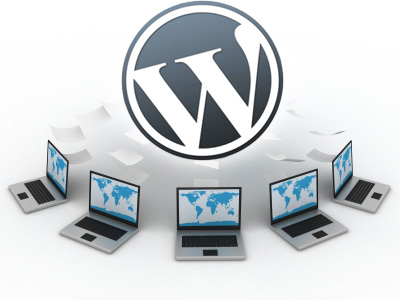While the Blogging service offered at wordpress.com are user-friendly and improving daily, there are distinct advantages to hosting your blog on dedicated servers. In addition to being able to upload custom themes and plugins, you also have complete control of behind-the-scenes code and the support of a strong community of bloggers and programmers.

1. Find cheap hosting
The first step to self-hosting your blog is to find an affordable web hosting option that still offers good service, up-to-date software, and a user-friendly interface. There are a number of cheap hosting options available, and which one you choose depends primarily on your budget.
If you’re lucky enough to have cPanel installed on your server, you’re pretty much set. The Fantastico scripts included with cPanel allows you to install WordPress (and many other blog platforms) on your dedicated server with just a single-click. If your blog doesn’t have cPanel installed, however, you’ll have to perform a manual installation. Here’s how to do it:
2. Download and unzip WordPress
If you haven’t already got it, the first thing you’ll need to do is install the WordPress blogging software on your server. Visit wordpress.org and download the latest version of WordPress. After you’ve downloaded the file, go ahead and unzip it to a folder on your hard drive. This prepares the software for upload to your server.
3. Upload the unzipped folder
With the WordPress package unzipped, you’re ready to upload your file. Use a file transfer protocol (FTP) client such as WinSCP (Windows), CyberDuck (OS X), or FileZilla (Windows, OS X) to upload the unzipped folder either to the root directory or a subfolder you’ve created. It’s usually easiest to upload WordPress to the root directory.
4. Set up the database
In your server administration panel, create a MySQL user with full permission to access and modify databases and create a database in which your blog can store relevant data. Choose any username or password that you’d like during this step, but make sure to write it down, as you’ll need to remember it later.
5. Configure wp-config.php
Next you’ll want to find a file called “wp-config-sample.php” in the WordPress files you’ve unzipped and rename it to “wp-config.php.” Then open “wp-config.php” with a text-editing program such as Notepad (Windows) or TextEdit (OS X) and change the example information provided to match the database information you’ve just set up. This is where you’ll need to use the username and password that you wrote down earlier and the name of the database you’ve created. If you’re uncomfortable with editing your “wp-config.php” file manually, you can skip this step and wait until you run the installation script, where WordPress will attempt to help you input the necessary data.
7. Run the WordPress installation script
Now that you’ve got the necessary files uploaded and your database created, it’s time to actually install WordPress to your server. Open up a new browser window and enter your domain name followed by the path “wp-admin/install.php” (e.g. “http://yourdomain.com/wp-admin/install.php” or “http://yourdomain.com/blog/wp-admin/install.php”) to run the installation script on your server. If you haven’t yet configured wp-config.php, the installation script will prompt you to create one and attempt to walk you through the process. Click through the pages and enter the database name, username, and password (the ones you wrote down), but don’t alter the database host as the default “localhost” is fairly standard among all web-hosting services. Neither is it necessary to edit the default table prefix field.
8. Enjoy the fruits of your labor
Good work! You’ve successfully installed WordPress to your dedicated server! Go ahead and start blogging!



